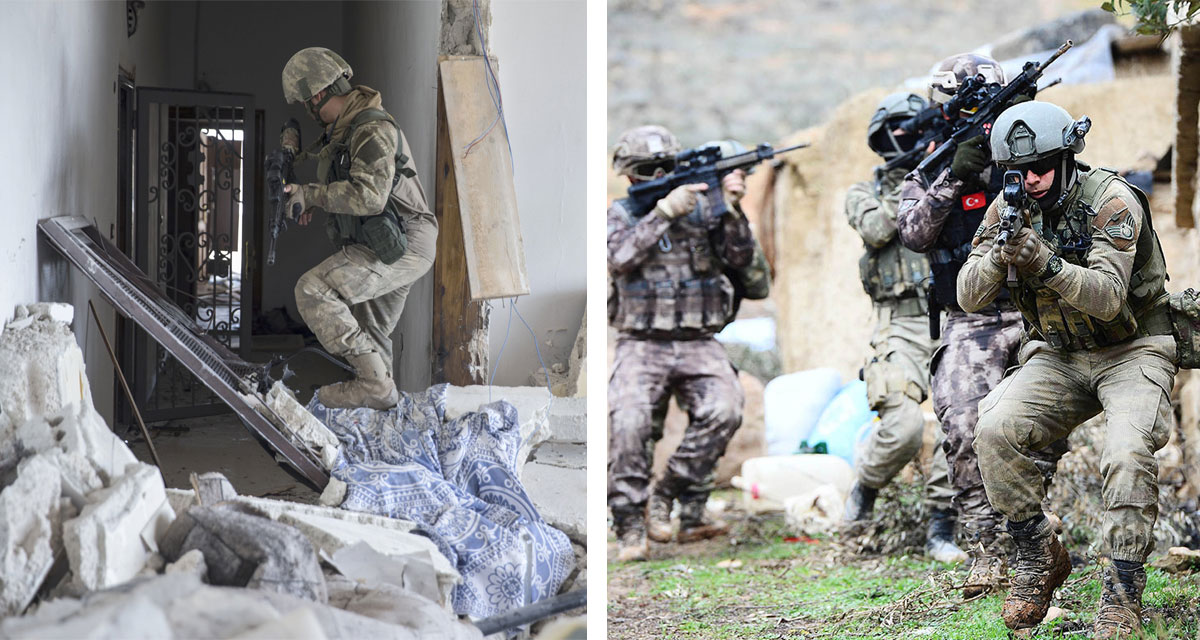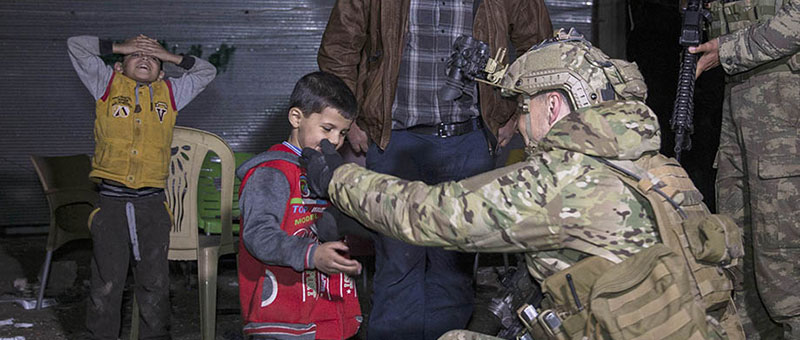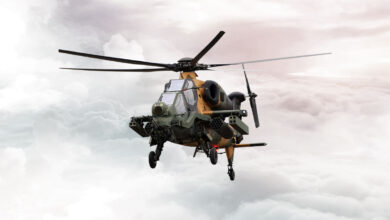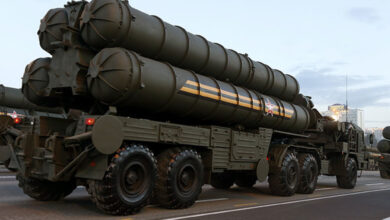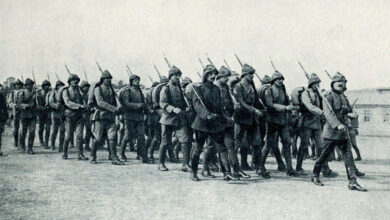Mümbiç: Dagger in Turkey’s Back From the East of Euphrates
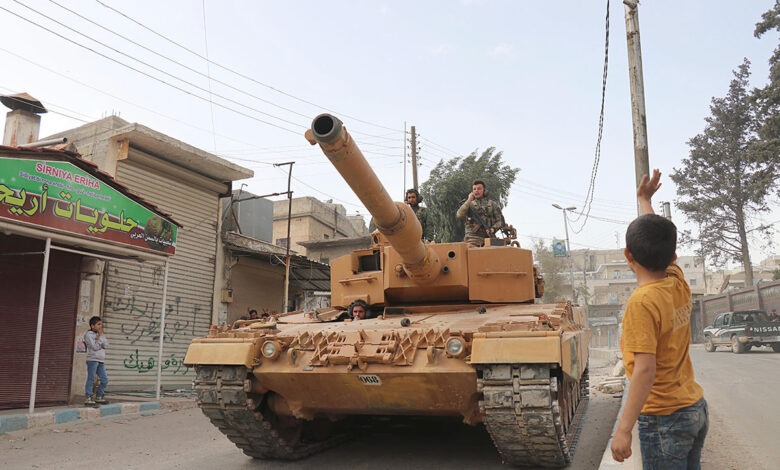
Mümbiç is known as an artistic and cultural center of Syria. It is a city that plays host to historical sites such as Umr el Serj Castle and many poets. Mümbiç is also known as the city of “El-Buhti”, a renowned poet. It is also called the door to the East of the Euphrates.
This city known as Menbiç, Münbiç, Minbiç, Minbij and Manbij in different languages, dialects and sources was called “MÜMB‹Ç” in Ottoman archives.
The center of the Mümbiç region stands on extensive agricultural land 398 meters above sea level and located 30 kilometers west of the mainstream of the Euphrates River, 30-35 kilometers from the Turkish Border (Karkam›fl), 80 kilometers from the center of Aleppo, 30 kilometers from Cerablus, 65 kilometers from Ayn-el Arap and 45 kilometers from El Bab. The road between Afrin and Mümbiç is 100 kilometers.
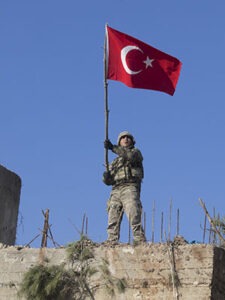
Despite all the demographic impacts, Mümbiç was known as a region where all different ethnic groups lived without conflict prior to the YPG/PKK invasion. There was no ethnic and social enmity until the YPG/PKK imposed ethnic and ideological assertiveness and transformation. There were important reasons behind the move of the majority of tribes and political structures representing the overwhelming majority of Mümbiç to establish a unity against the PYD/YPG invasion, namely the “People’s Movement against Invasion”. The drivers were the YPG/PKK’s demographic transformation projects based on tyranny, alienation, marginalization, dominance, engagements, pressure, hijackings and seizures, forced immigration and cunningness.
The Arab tribes amongst these political structures were El Bubenna, Beni Asiyd, El Buflaben, Umeyrat, Ceys and Damalka; Türkmen tribes were Güleç, Arapl›, Karafl›hl›, and Hac› Ali. It is necessary to include the Nida Party in this political structure.
Many smaller tribes, sects and families that are tied to bigger tribes should be listed among this groups. Moreover, we must not forget that there are more than 700 Mümbiç warriors among the members of the existing Free Syrian Army.
It is reported that the population of Mümbiç was more 200 thousand and reached 300 thousand after the beginning of Civil War in 2011. It is predicted that 120 thousand of this figure was made up of refugees who arrived in the region due to internal migration and of Kurds settled by the PYD/PKK. However, people started to emigrate again due to recent security problems. Due to this and similar civil war dynamics, the population has fluctuated.
MÜMBİÇ DURING THE SYRIAN WAR
Joined rebellion rallies against Bashar al-Assad Regime. Free Syrian Army (FSA) took control in July 2012. It was invaded by ISIS following fierce clashes with FSA. YPG/PKK/DSG started to capture the city from ISIS starting from May 31, 2016 due to support of extremely effective air support from the US-led international coalition. The reason for this invasion was announced as the fight against ISIS. However, such a thing never actually happened. Approximately 200 civilians lost their lives in Mümbiç during the PKK invasion. None of these people had proven connections to ISIS. More interestingly, no ISIS members were taken as hostage during this handover! It was claimed that these organizations made a deal which was similar to the YPG/PKK-ISIS deal in Rakka, which was reported by the objective BBC.
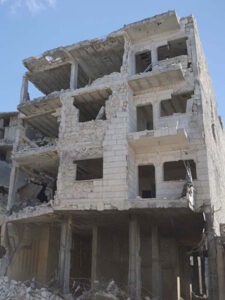
In addition to that, there were approximately 2,000 YPG/PKK terrorists in Mümbiç. It is predicted that this figure rose to 6,000-7,000 after the Operation Olive Branch staged against Afrin. It is reported that terrorists who escaped from Afrin had brought portable heavy weapons to Mümbiç.
Line of contact through the south of Sacur River is not clear. It is not possible to call it “Stable”, especially the northern line. It is known that smuggling and trespassing is so easy that even a convoy of more than 50 trucks can cross this line.
It is known that the US and its operational partners are influential in the center, north and east. Meanwhile, Russia and Regime supported forces have a say in Al-Ariman center of Mümbiç to the east of El Bab.
In the last analysis, 420 villages out of 450 in Mümbiç and environs as well as the province center are under the invasion of YPG/PKK. Thirty villages remaining within the administrative borders of Mümbiç are controlled by the FSA while a further 200 settlements are under the control of the Syrian regime and its allies.
HISTORIC AND TOPOGRAPHIC REFERENCES
It is an ancient and historical city. Greeks named Mümbiç Hierapolis meaning “Sacred City”. The people of Mümbiç resisted the French invasion until the Ankara Treaty of 1921. According to Ottoman archives, Mümbiç was the last abandoned point. Before the French mandate, its population was made of Turkmens, Arabs and Circassians. Demographic interventions began after this date. The First tomb of Suleyman Shah at the Caber (Kalaat Jabaar-Ceber) Castle is within the impact area of Mümbiç. The name of this place at the south of Lake Assad close to Tabka Dam takes its name after a strategic reference and is called “EUPHRATES GATE”. The present tomb place of Suleyman Shah, the “Turkish Soil” in Karakozak, is located on the south side of M4 state road to Mümbiç and bridge over the River Euphrates dam to the north of Lake Assad. It has “legitimacy of intervention” and geopolitical importance. Mümbiç became a city center on April 02, 2013. Mümbiç is known as an artistic and cultural center of Syria. It is a city that plays host to historical sites such as Umr el Serj Castle and many poets. Mümbiç is also known as the city of “El-Buhti”, a renowned poet. Mümbiç is also called the door to the East of Euphrates.
STRATEGIC IMPORTANCE
It is among the extremely important cross-border places that Turkey inarguably must control or must have an influence over in its fight against terror activities. An “Impact-Attention and Domain” zone related to all cross-border activities performed for the continuation of Turkey’s unitary structure, integrity and security. One of the most important factors in this location’s future is control of water basins and rivers. It has vital hydrological value in a regional scale due to its location allowing the control of the Euphrates River, Lake Assad on the Euphrates, three dams with road crossings (including Tabka), irrigation networks and energy that will be generated from these sources. Its location close to the Turkish Border makes it an important route for passage to Rakka, Aleppo and many other roads to rural villages and further increases its importance. It forms a bridge between the Euphrates region and Rakka. It connects three different regions that YPG/PKK/SDG want to control (Afrin-Ayn el Arap (Kobani) and the northwest of Syria).
FROM EUPHRATES SHIELD TO MÜMBİÇ…
Targeting an area covering a 5,000 square kilometers ,, Operation Euphrates Shield began in August 2016 in the aftermath of the July 15 coup attempt and it was an “extremely risky” move based on international law aiming at protecting the right of self-defense, fighting against terror, offering safe living environment for refugees, preventing the establishment of a terror corridor (united terror area) and maintaining the connection between Turkey and the Middle East.
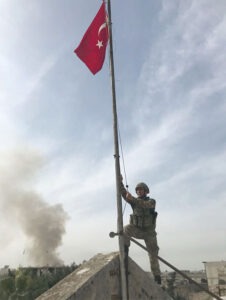
The TSK that did not engage in conflict in the early stage of the operation with its allies who were using YPG/PKK for their own interests, and left the solution to political and diplomatic processes upon the direction of decision makers, and concentrated on ISIS. When Operation Euphrates Shield ended in El-Bab, the morale, confidence and resistance of ISIS were broken in a way that would never mend again. There is another important situation that should be considered at this point: Even the TSK’s move to concentrate on ISIS after the US and French Elite Forces were deployed between Turkish army and terrorists was not enough for its allies. While the TSK was staging the operation against El-Bab, control of some areas was handed over without firing a single bullet. YPG/PPK elements coming from Afrin through Tel R›fat and YPG/PKK elements moving from the East of the Euphrates and Mümbiç tried to connect two areas in Arimah to the north of Bab. Despite the difficulties and field games, TSK elements quickly moved south and foiled this historical plot that might have led to the connection of terror regions at the east and west of Euphrates. Turkey was the absolute winner in terms of basic impact from an operation that destroyed all these games and their possible outcome and damaged the morale, trust and resistance of ISIS in a way that it could never mend. But its own allies did not want Turkey to have an impact on this land. The US-PKK and Russia-Regime Supporters were involved in a land capture race in the whole of the area affected by the operation from the east and west of the Euphrates to its south. This also included the fait accompli invasion of Mümbiç, even though it was promised to be otherwise. While ISIS, defeated by the TSK, was withdrawing to some small areas located in Badiye, the Iraq-Syria border and south and west of the country as a reserve organization that would be used for different purposes in the future, another bloody organization that aimed at destroying Turkey’s territorial integrity, unitary structure, security, survivability and the stability of the region, by invoking ethnic-sectarian differences and ethnic enmity, conflict and war, that has caused the deaths of more than 55 thousand people in Turkey alone, namely the YPG/PPP, became a rising value. For all these reasons, the neutralization of YPG/PKK/DSG/KCK, or the same organization under some other name, deployed at the east of Euphrates especially Mümbiç, mountainous areas at the north of Iraq and other controversial areas in Iraq like a cancer and erasing the impact of these organizations from society are important missions that should be carried out in the name of “humanity and security.” Fighting against not only organizations based on ethnic enmity but also against radical terror organizations exploiting beliefs-ideologies, religions-religious systems and the powers and those who control these organizations not only in this region but all other regions is crucial for the future of humanity.


